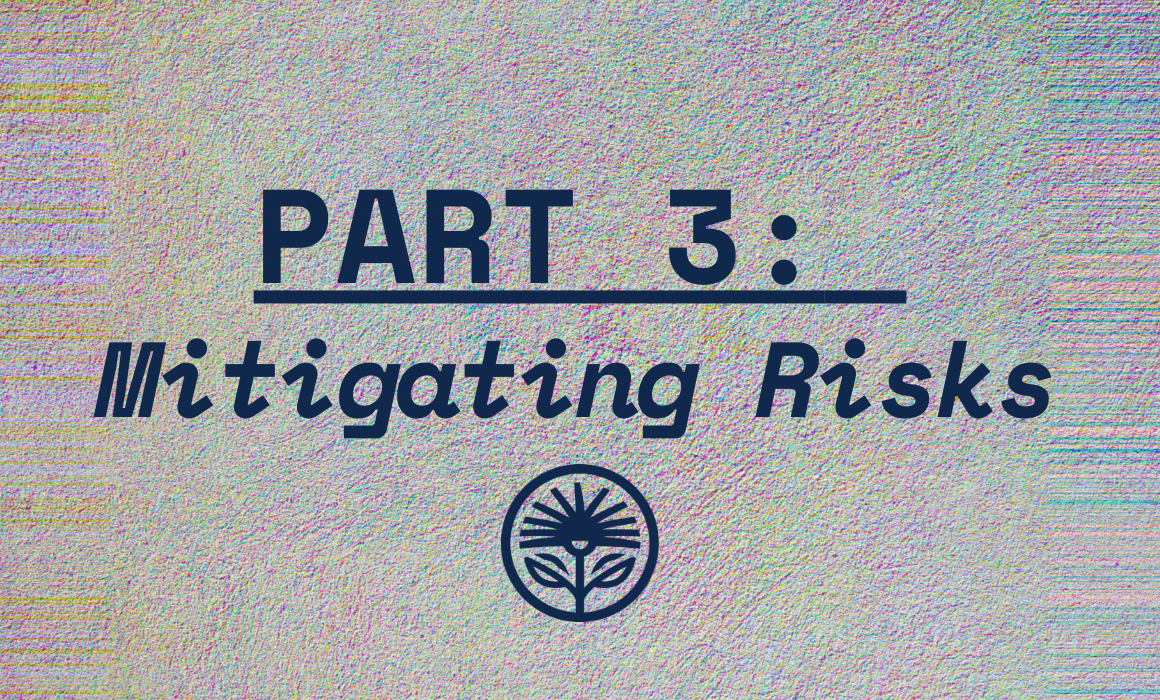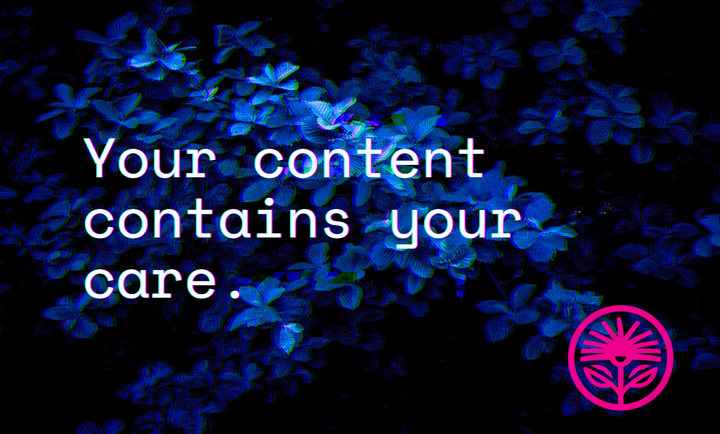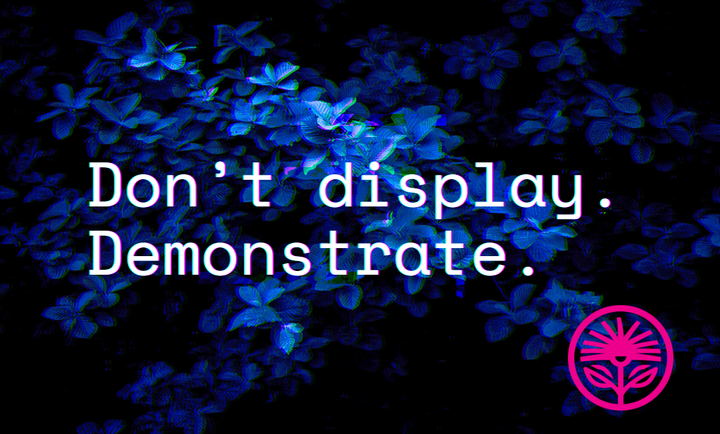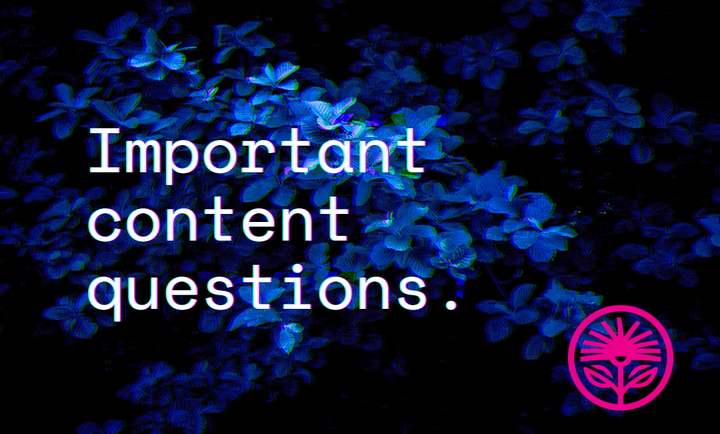Zero Plan Part 3: Mitigating Major Risks
Plan to avoid the worst outcomes.

Let’s face it: being an entrepreneur can be stressful.
Working with the public, putting yourself out there, and opening yourself and your business up for scrutiny, criticism, and disinterest—these all take a toll.
So to keep doing what we love, we need systems to respond to crises, emergencies, and problems so they don’t burn us out or deplete our resources.
Join fellow entrepreneurs and communicators in October for a special session called “Outer Crisis, Inner Calm” and learn how business owners and public-facing communicators can keep cool in a crisis.
View the event page here, or simply reply to this email if you have questions.
Mitigating Major Risks
We’ve talked about the inevitability of, eventually, getting zero results from a marketing effort.
We’ve talked about how to honestly assess what could go wrong.
And we’ve talked about how to hedge against our worst outcomes.
Now, let’s talk about avoiding the bad outcome in the first place.
When the stakes are (or feel) high, or when we’re investing heavily in something we feel needs to go right, here are some techniques for improving the odds:
Invert Your Assumptions
Pause and give this some thought: What is the core assumption your marketing effort is based around?
Is it that your friends and contacts will support you?
Is it that your advertising expense will pay for itself in sales?
Is it that the economy will improve and people will spend more?
What’s your core assumption about your marketing project? What do you—actively or only subtly—think should happen?
Take that assumption, and invert it—flip it on its head—and then make a plan to mitigate it.
You’re counting on friends and favours: What if you they don’t or can’t come through? Can you create an additional incentive or offer anything that would cement the support?
You’re counting on your ads to pay for themselves: What if the upfront cost is higher than you expect and sales lag well behind? Can you do a soft launch before the campaign to help subsidize it?
You’re counting on the economy to turn around? What if things get worse? Can you add in any flexibility to your contracts (even at short-term cost), or focus more intensely on a particular customer set to concentrate your impact?
Start from the Base Rate
When we’re doing something, we tend to exaggerate the likely results. We either think things will go especially well, or especially poorly, just because it’s us.
Business owners have it even worse, because the very fact that we’re business owners demonstrates that we don’t think the stats apply to us. The vast majority of businesses will go out of business within just a few years. And yet here we are, trying anyway, as if we’re special.
We call that “ambition” in some contexts, but when it comes to planning our marketing, it can be dangerous.
Because our results are likely to be close to the base rate—the results most people get in the same situation.
Daniel Kahnman and Amos Tversky coined the term Planning Fallacy “to describe plans and forecasts that are unrealistically close to best-case scenarios, and could be improved by consulting the statistics of similar cases.”
So, if someone else was to attempt what you’re attempting—in your circumstances, with your resources, your abilities, your context, your company—what kind of results could they expect?
Attempt to expect the same, and notice what you’d do differently in that case. As the ancient philosopher Seneca said, “Fortune is never less to be trusted than when it is fairest.”
The temptation is to lean into bad odds—when what we want to do is assume what would happen to anyone could happen to us, and avoid a bad outcome.
Know When to Stop:
The most dangerous part of Everest is the way back. Often because climbers push themselves too far, and they don’t follow their “turnaround time”—the time after which it’s simply too late to attempt the summit, and they must turn around to get back safely.
But the tendency and temptation is to keep pushing, at our own expense. We don’t want to look like we gave up, gave out, or were simply wrong.
That’s why it’s vital to set and follow “turnaround times” or “quitting criteria.” As Annie Duke, PhD, wrote in Quit: “The best quitting criteria combine two things: a state and a date.”
By when will you know it’s too late for your plan to work? And what will have to be true or false for you to know it can’t work?
For instance, if you don’t sell x products by y date, you’ll pause the ad campaign to preserve budget.
Or if you don’t get x RSVPs by y time, you’ll cancel the open house and turn it into a marketing video shoot.
What’s your state and what’s your date?
A deadline you simply move is never missed—as long as you move it before it’s a problem.
A promotion you simply pause is not a failure—as long as you pause it before you run out of money.
A campaign you stop is not a mistake—it’s a successful experiment with a useful result.
And remember, as Dr. Duke says, “making a plan for when to quit should be done long before you are facing the quitting decision.”
Stay Curious and Flexible:
It’s easy to get scared when we think about what could go wrong.
But if we want to increase our chances of success, we want to stay curious, flexible, and optimistic.
Yes, things could go wrong—but we’re ready for that.
Now, we’ve got to be ready for things to go right—even if we need to adjust on the fly.
As Al Ries and Jack Trout wrote in The 22 Immutable Laws of Marketing, “One way to cope with an unpredictable world is to build an enormous amount of flexibility into your organization.”
As one military strategist put it, “A plan, like a tree, must have branches—if it is to bear fruit. A plan with a single aim is apt to prove a barren pole.”
So we can’t let ourselves give into fear, get scared, and stop looking for opportunities and options. We want to stay open, flexible, and curious.
When things are tough, or are even looking bad, we need to remember that “real toughness is experiencing discomfort or distress, leaning in, paying attention, and creating space to take thoughtful action,” as Steve Magness wrote in Do Hard Things.
So stay optimistic, stay curious, and stay flexible.
Don’t give into fear, but do give yourself the flexibility to change, adapt, and seek out new and better opportunities.
Because eventually, inevitably, we’ll get a zero one day.
But if we honestly assess what could go wrong, hedge against the worst outcomes, and mitigate the likely causes of trouble, we’ll be prepared for anything.
Including nothing.
The Series:
Crisis Model: Zero Plan
Part 1: Honest Assessment
Part 2: Hedging Your Bet
Part 3: Mitigation Strategies
Part 4: The Final Framework



